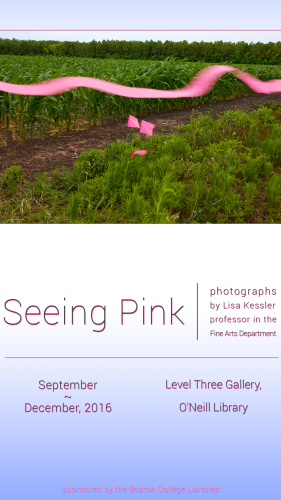This selection of photographs is part of a larger body of work called Seeing Pink, about the idea of the color pink in America.
Why pink? First, it’s a sensational color. Pink stands out, it draws our eye and affects our senses. And secondly, it is jam-packed with all kinds of meanings, many of them conflicting. I was not a fan of the color pink. But I like conflict, I like meaning, and I wanted to work on a project that might make people smile.
Right from the start I made a list of connotations: pink means feminine and female. It connotes innocence, vulnerability, and softness. It can mean intimate or powerful (roller derby), provocative, aberrant or sickening (Pepto Bismol pink). It can be eccentric, defiant (Code Pink!), playful, or plastic. Rare meat is pink; in pornography pink is slang for vagina. I knew I had a lot to work with.
The color has a rich political history: A “Pinko” refers to anyone sympathetic to the left. The Nazis marked homosexuals with a pink triangle (yellow for Jews, red for political prisoners, green for criminals, etc.) – a pink triangle that gay rights activists turned upside down and re-appropriated as a symbol of pride in the 1970s.
Today the color pink is used to humiliate men in the Maricopa County, Arizona prisons and to annoy visiting football teams at the University of Iowa, but men and women also use it to assert their freedom from cultural norms. Pink is a signifier masquerading as a color. It confines and liberates, and ultimately holds a mirror to our culture.
- Lisa Kessler. professor in the Fine Arts Department, 2016

